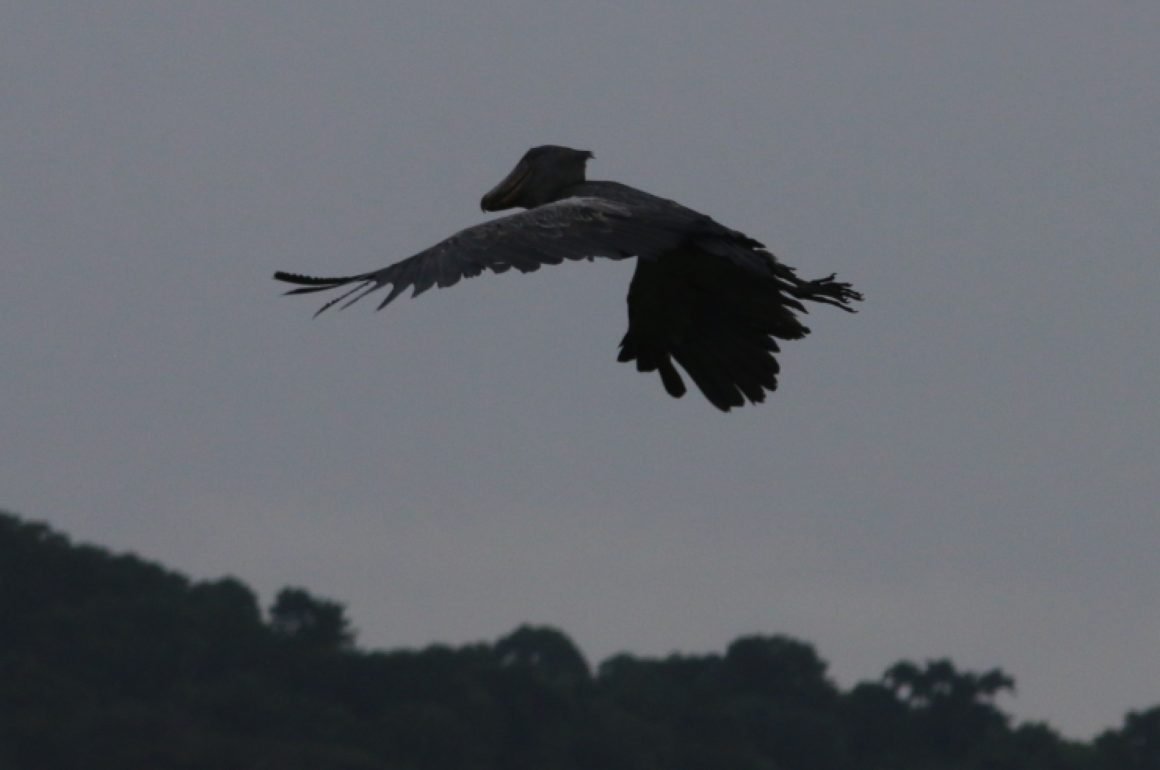
This post was originally published on November 26, 2019. It is republished in our new “From the Archives” series, by which we want to draw attention to our vast back catalogue of more than 10,000 birding-related posts published over the last 15 years or so.
Not all birds are created equal. The Resplendent Quetzal boasts a tail so long that people travel the world to admire it. The Sword-billed Hummingbird puts its less endowed kin to shame. Penguins are, obviously, penguins, which makes them awesome. These are the kinds of birds even those barely cognizant of nature recognize, appreciate, and aspire to.
Central Africa has one of those birds. Nothing on Earth quite resembles the Shoebill. This shaggy, slaty, storklike creature possesses a proboscis preposterous enough to put it in league with pelicans, toucans, and curlews. But that massive clog on its face, perfect for gobbling lungfish, only explains part of the Shoebill’s charm. Its entire aspect hearkens back to prehistoric times, while that enigmatic smile combined with a cold yellow eye suggests either wisdom or menace.
The Shoebill serves as the symbol of the magnificent wildlife experiences Uganda offers visitors, which may seem a bit odd. After all, the Shoebill isn’t endemic to the country; only Fox’s Weaver currently holds that title. Unfortunately, the world cares little for weavers, no matter how rare or range-restricted. Nor is the Shoebill the national bird of Uganda. That honor goes to the Gray-crowned Crane, a very sexy species in its own right. However, Uganda seems to be the best place in the world to see the Shoebill, and Mabamba Swamp may be the most reliable and convenient target site for this charismatic megabird.
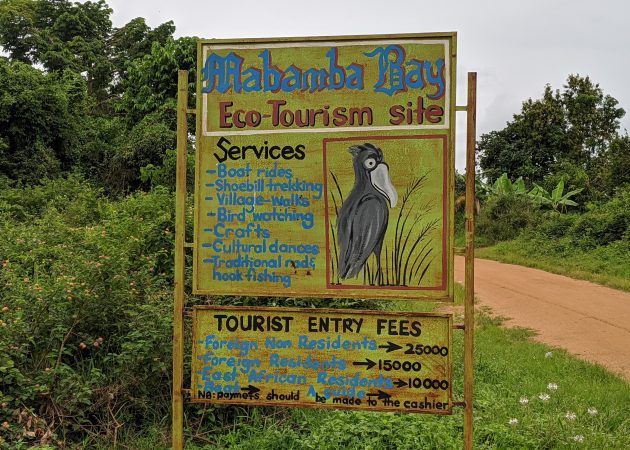
Mabamba’s greatness begins with its proximity to Entebbe; the trip from the airport takes about two hours. In addition, this papyrus swamp is simply gorgeous and teeming with other desirable birds. But Mabamba transcends other Shoebill sites because of its extensive birding infrastructure. A rich network of spotters, guides, and boat pilots serve a constant stream of visitors at a park dedicated to the twin virtues of aviphilia and conservation.
Mabamba Swamp is where Corey and I spotted our first Shoebill in the company of an international delegation attending the 2019 African Bird Expo. Our group, led by world-renowned guide Herbert Byaruhanga, piled into canoes ostensibly to search for a variety of papyrus and wetland specialties, but really we were just looking for the shoebill.
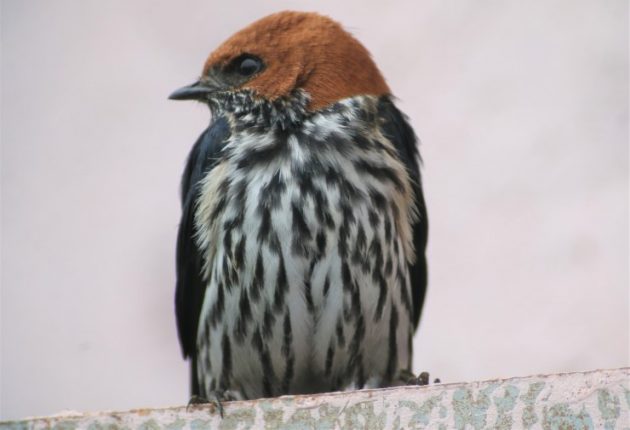 Lesser Striped Swallow
Lesser Striped Swallow
And look we did. The Shoebill does not simply present itself but rather, like any object of ardent affection, must be pursued diligently. As our pilots plied and poled the calm waters of the swamp, we allowed only passing glances to beauties like Malachite Kingfisher and Fan-tailed Widowbird in order to focus on the goal at hand.
Depending on time of year, quality of guide, and vagaries of fate, Mabamba Swamp offers at least an 80% chance of success but never a guaranteed bird. We had to search a little longer than Herbert may have wanted, but our first Shoebill sighting obscured any memory of effort or anxiety. Our primeval quarry flashed that cold, knowing smile and flew off, daring us to track it down for better looks. Of course, we did, soaking in that slate blue beauty long enough to observe a successful hunt and more of its rangy, awkward flight.
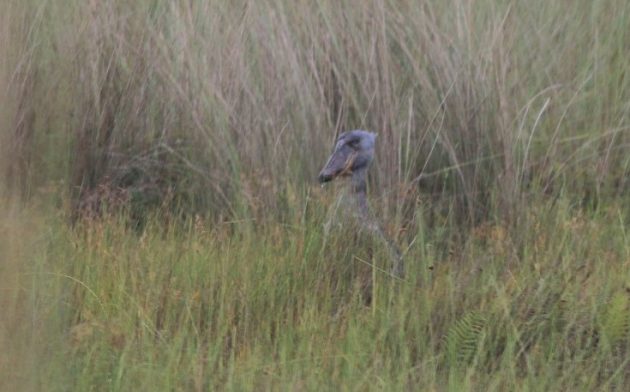 The mighty Shoebill
The mighty Shoebill
Our satisfied group then moved on the other treasures to be found at Mabamba, a slew of kingfishers, waders, raptors, and assorted songbirds that quickly grew to a list of over 70 species in just a few blissful hours. Less than 24 hours in the country, we could already declare our trip a success. Uganda may offer a chance at over 10% of the world’s bird species—birds we fully intended on tracking down—but the Shoebill surpasses them all in importance. This deeply weird bird represents the very tip of the spear of Uganda’s wildlife tourism sector, currently considered the country’s largest and most significant export. Sure, the Pearl of Africa has so much more for visitors to enjoy, including many of the most cherished mammal species on the planet, but the Shoebill seems to capture the imaginations of birders and non-birders alike. Having finally seen this iconic species, I can assure you that the experience wildly exceeds expectations. Make seeing the Shoebill a priority and, if possible, seek it out in Mabamba Swamp.
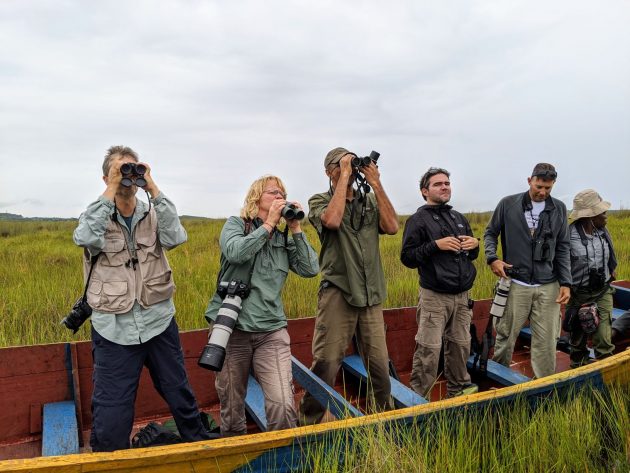 Very happy birders who traveled from all around the world for this very moment
Very happy birders who traveled from all around the world for this very moment
TRIP LIST (5 hours): Yellow-billed Duck, African Green-Pigeon, Eastern Plantain-eater, Black Crake, Long-toed Lapwing, Lesser Jacana, African Jacana, Common Sandpiper, Wood Sandpiper, Long-tailed Cormorant, Shoebill, Hamerkop, Gray Heron, Black-headed Heron, Purple Heron, Great Egret, Little Egret, Cattle Egret, Squacco Heron, Black-winged Kite, Palm-nut Vulture, Eurasian Marsh-Harrier, African Marsh-Harrier, Black Kite, Common Buzzard, Speckled Mousebird, Crowned Hornbill, Black-and-white-casqued Hornbill, Malachite Kingfisher, African Pygmy-Kingfisher, Woodland Kingfisher, Pied Kingfisher, Blue-breasted Bee-eater, Broad-billed Roller, Yellow-rumped Tinkerbird, Gray Kestrel, Lanner Falcon, Papyrus Gonolek, Gray-capped Warbler, Winding Cisticola, Carruthers’s Cisticola, Bank Swallow, Barn Swallow, Lesser Striped Swallow, Common Bulbul, Garden Warbler, African Yellow White-eye, Splendid Starling, African Thrush, Swamp Flycatcher, Scarlet-chested Sunbird, Red-chested Sunbird, Slender-billed Weaver, Northern Brown-throated Weaver, Village Weaver, Fan-tailed Widowbird, Grosbeak Weaver, Red-billed Firefinch, Bronze Mannikin, Pin-tailed Whydah, Northern Gray-headed Sparrow, African Pied Wagtail, Yellow-throated Longclaw
*******
Mike and Corey attended the 2019 African Birding Expo in the company of African birding legend Herbert Byaruhanga and a slew of international birding professionals. We are incredibly grateful to the Uganda Tourism Board for so generously sharing the splendor of birding and wildlife watching in the Pearl of Africa.
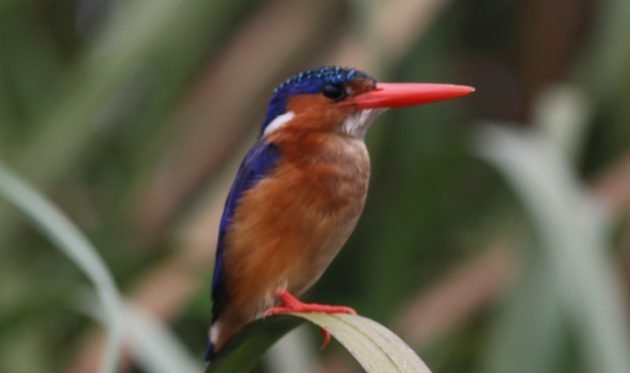 Malachite Kingfisher
Malachite Kingfisher







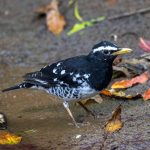
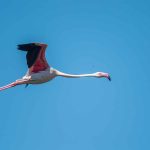
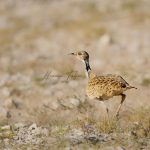

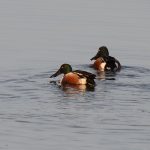
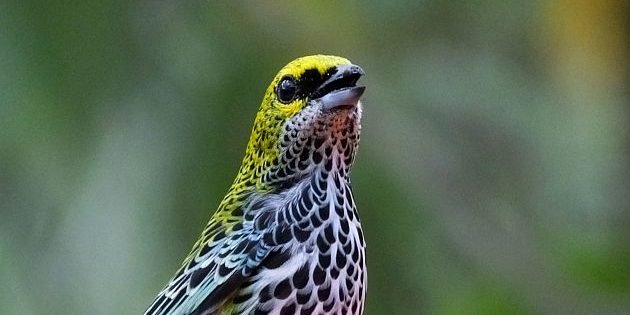
Mabamba is awesome